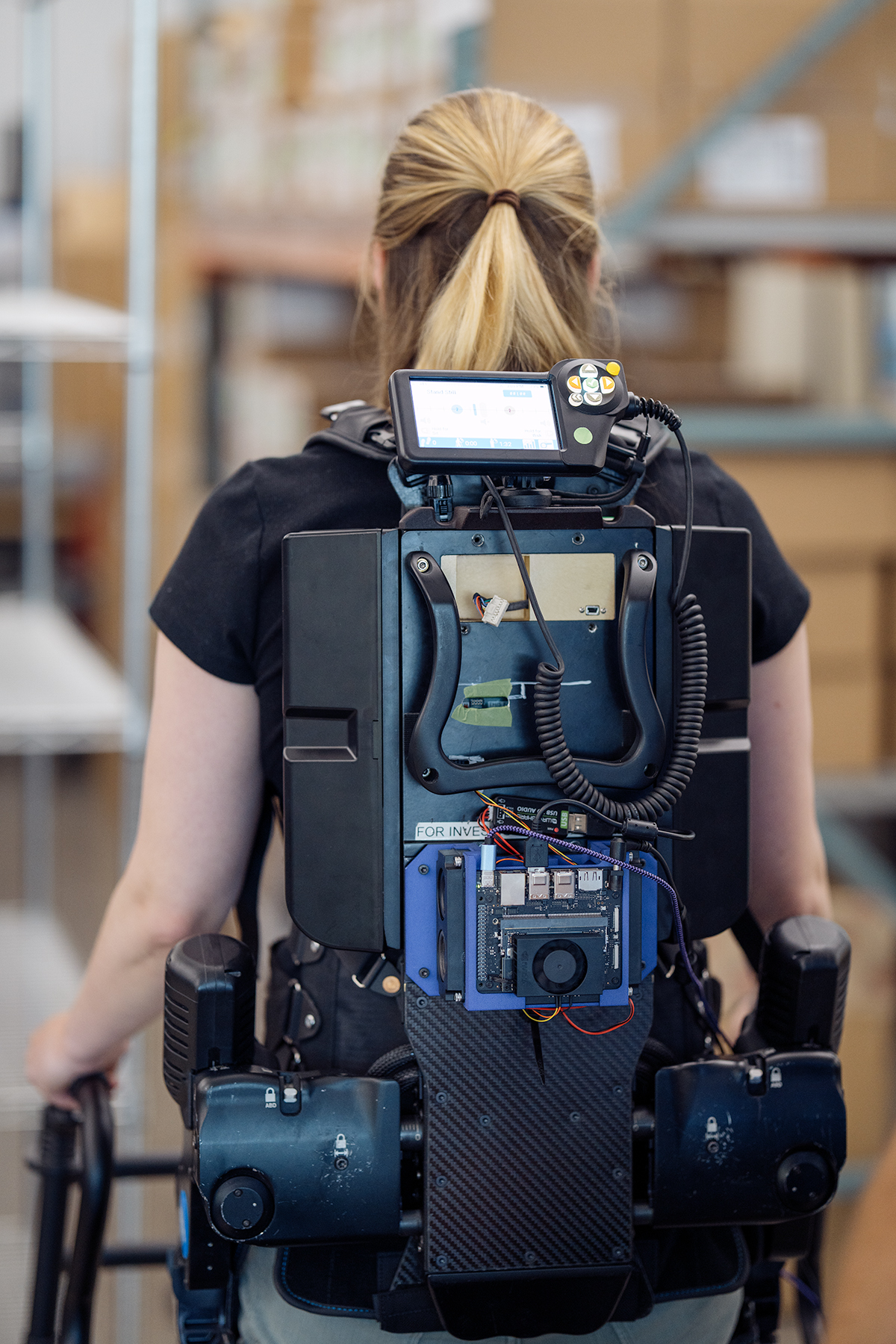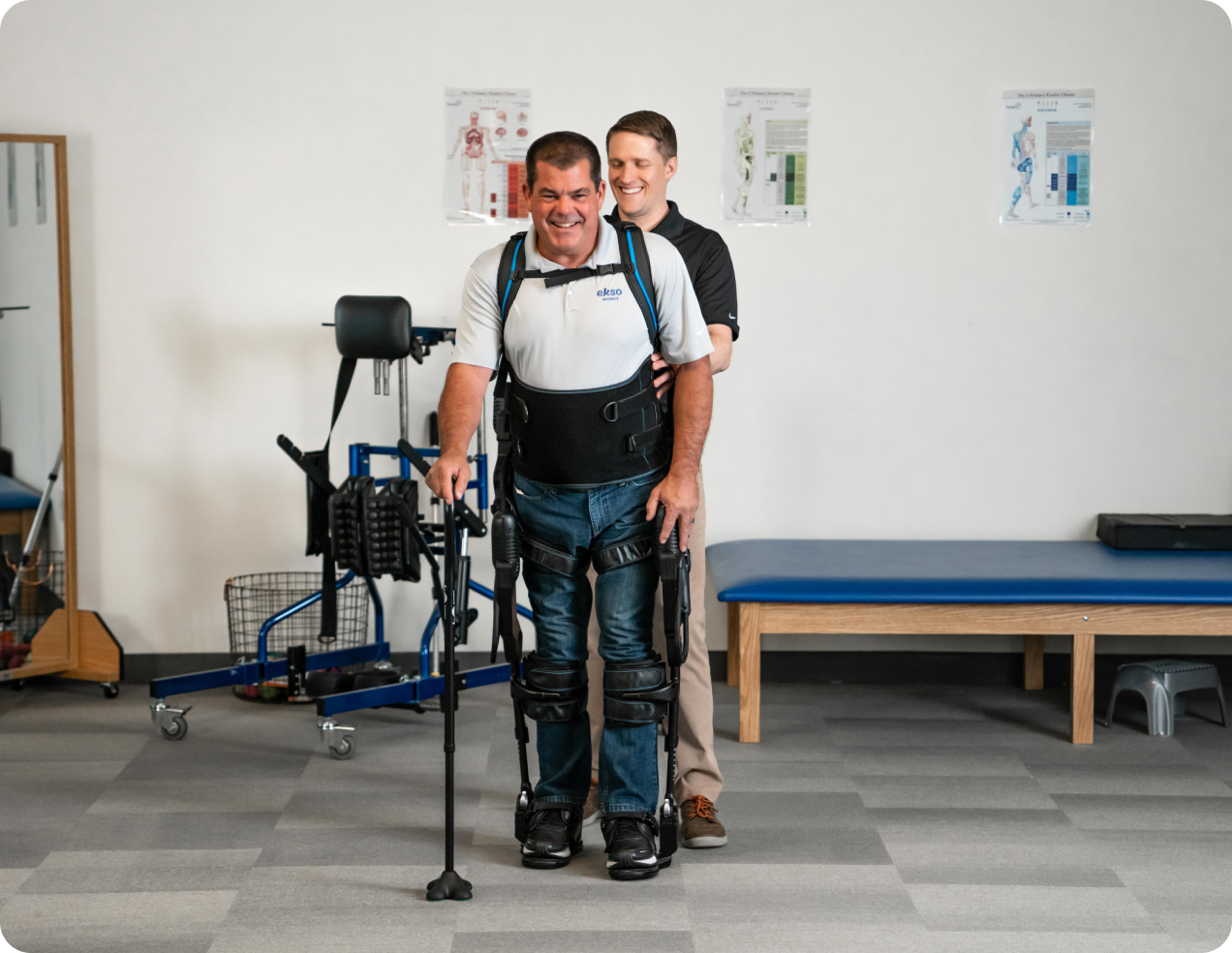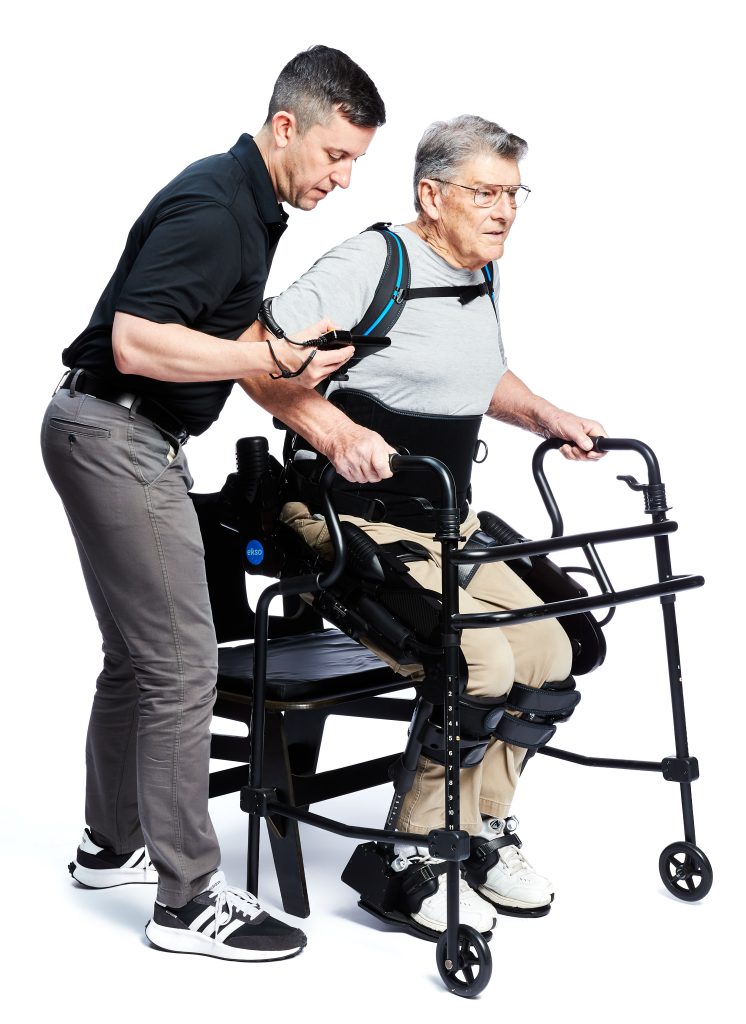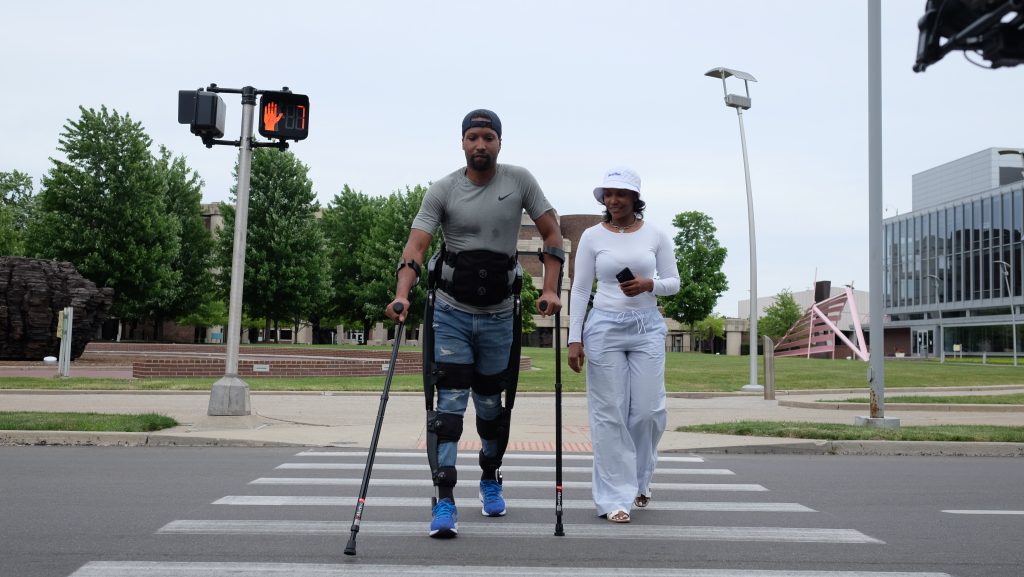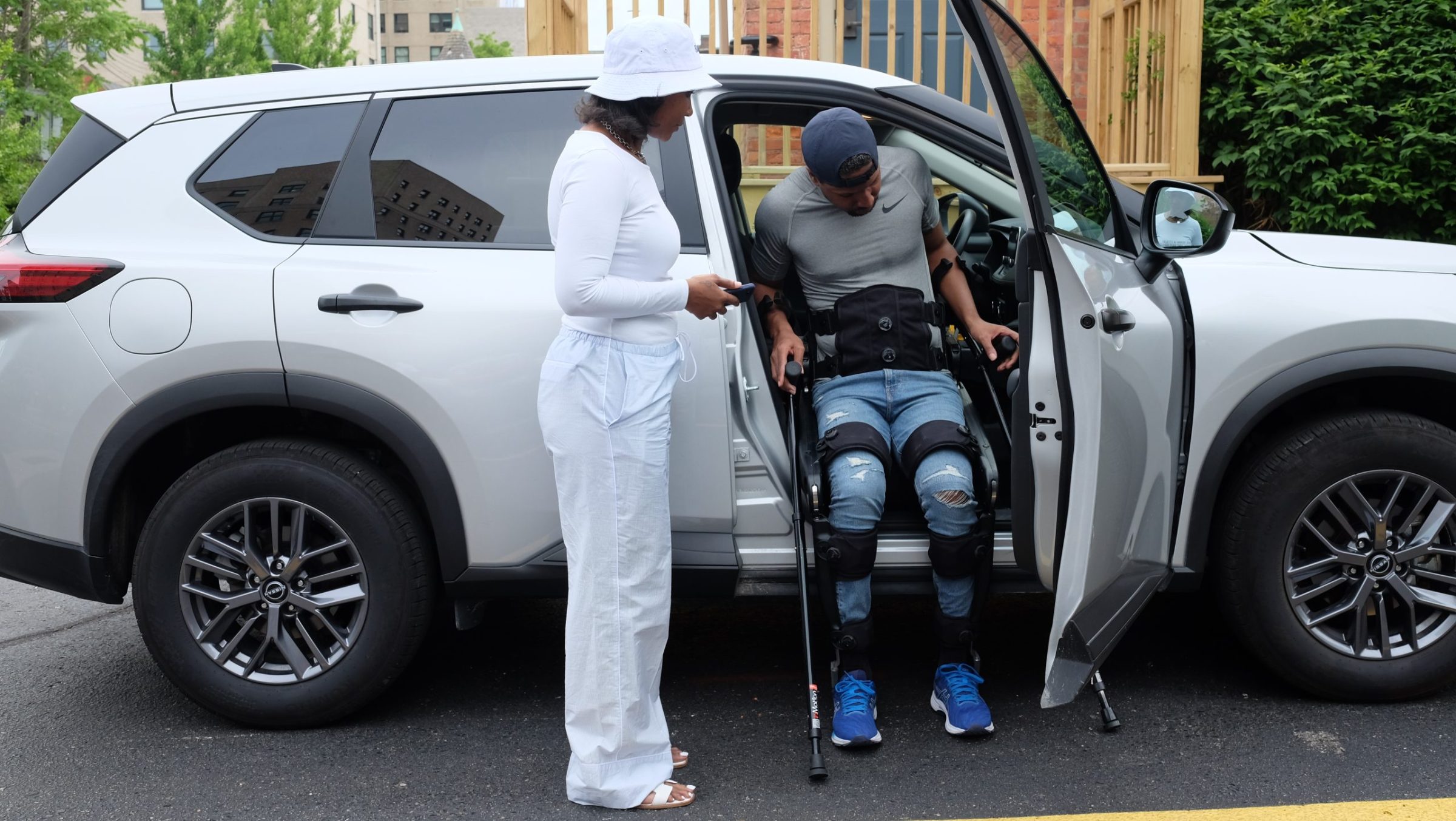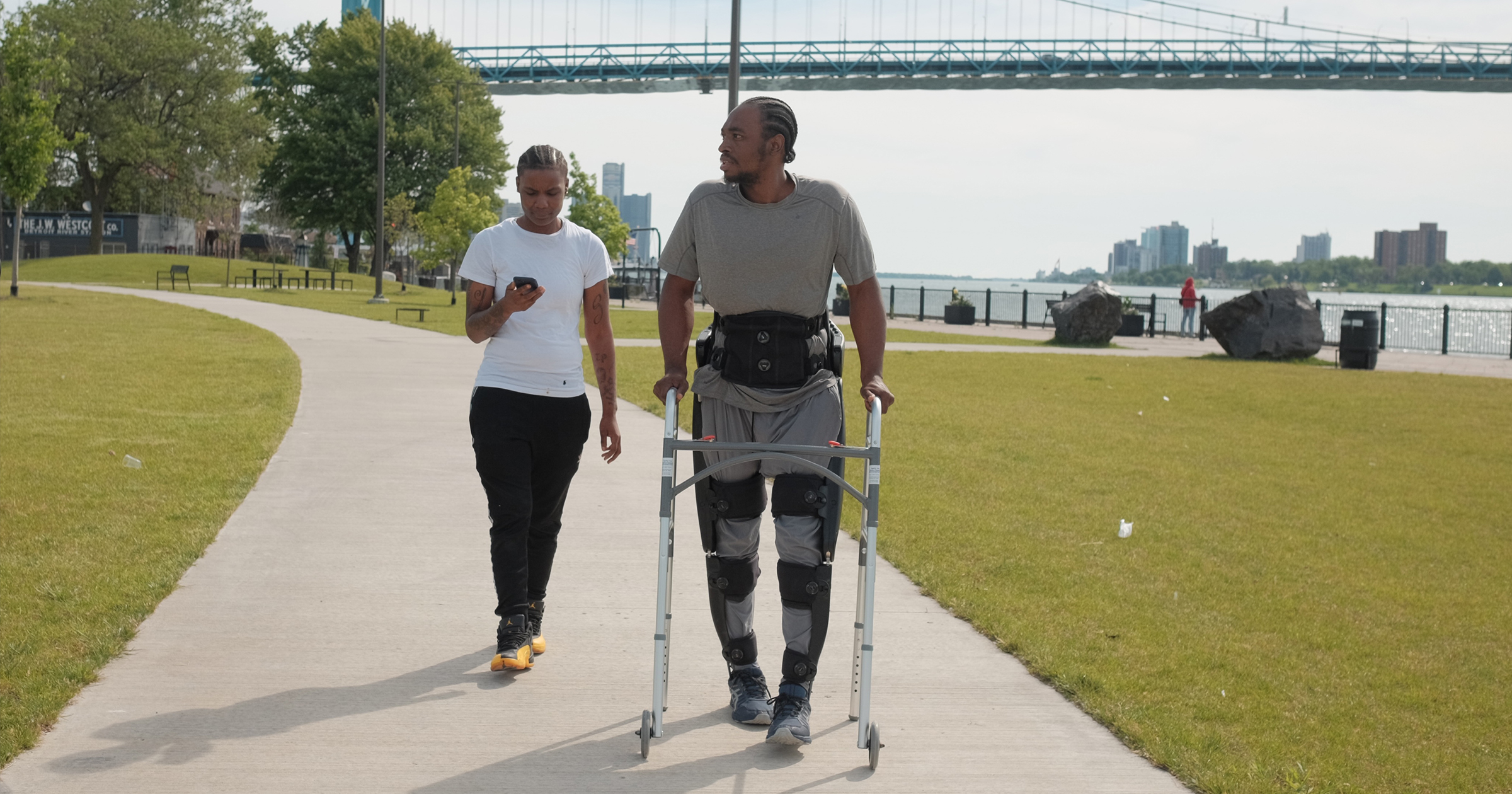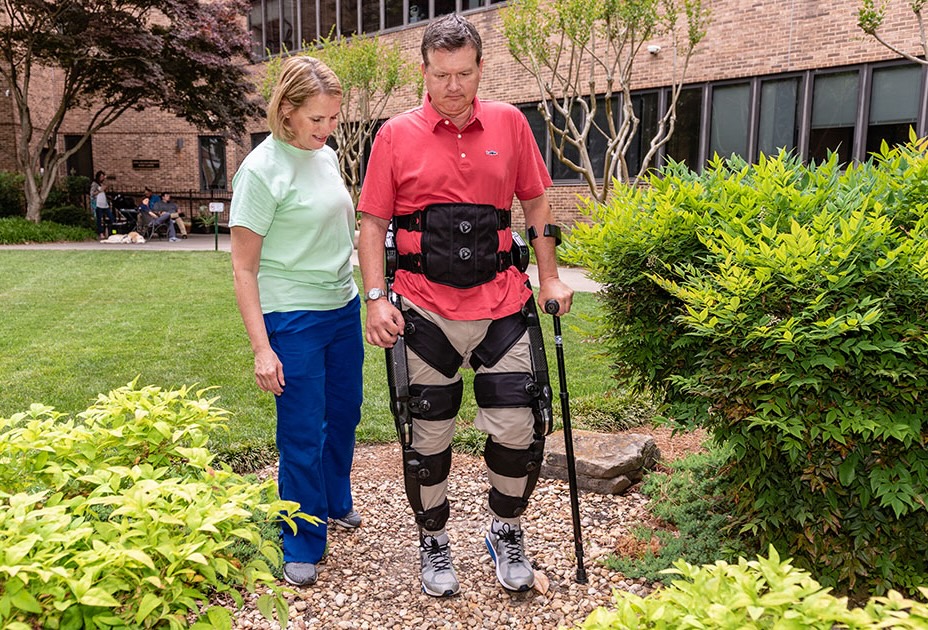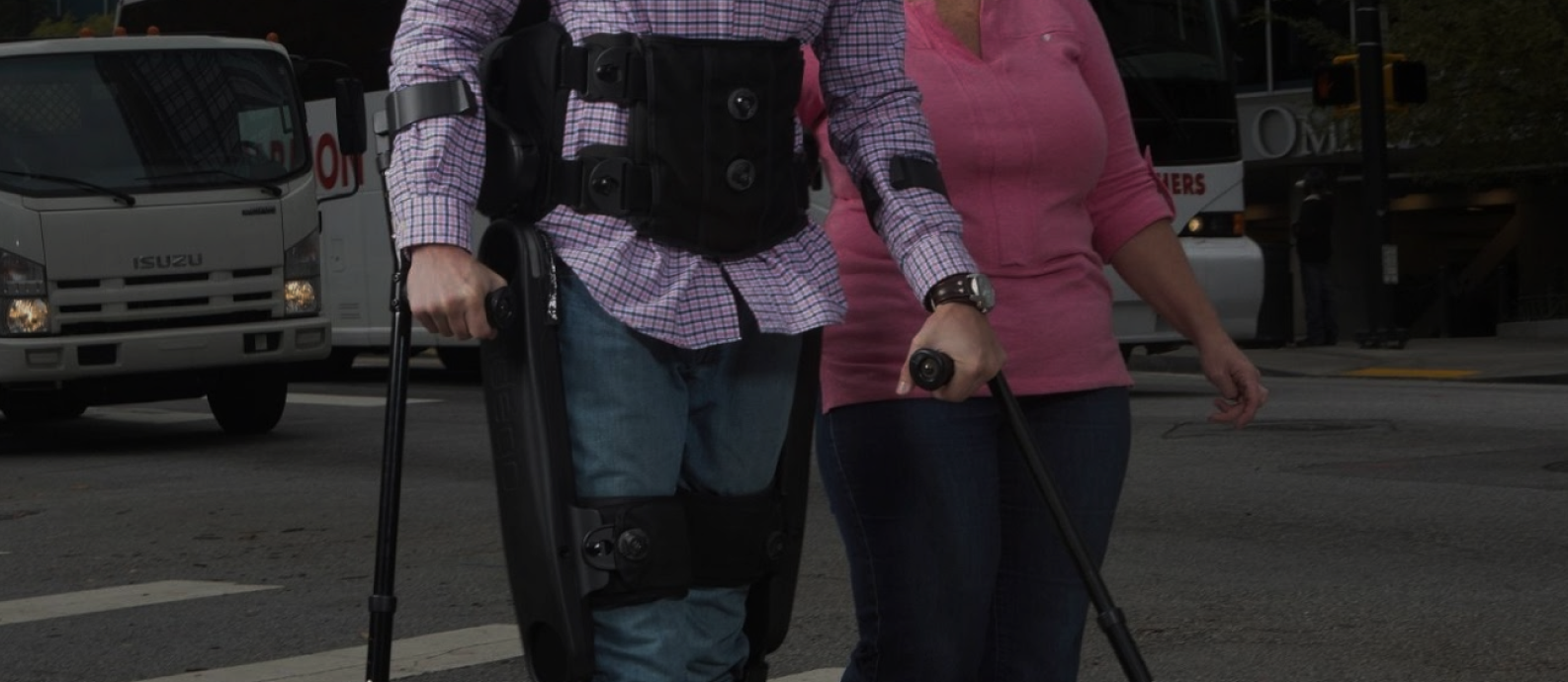Advancements in mobility aids have significantly transformed the lives of individuals with spinal cord injuries (SCI). Among these innovations, personal exoskeletons and knee-ankle-foot orthoses (KAFOs) stand out for their unique contributions to enhancing mobility. While both serve the purpose of aiding walking, the experience of using each is distinct. This blog post explores the differences between walking in a personal exoskeleton and walking in bilateral KAFOs.
Understanding KAFOs
KAFOs are orthopedic devices that provide support and stability to the knee, ankle, and foot. These devices can be traced historically back to around 1200 BC and have been used for a variety of ailments, notably Polio in more recent times. Typically made from a combination of metal, plastic, leather, and velcro, they are custom-fitted to each user. KAFOs are commonly prescribed for individuals with conditions such as multiple sclerosis, cerebral palsy, or spinal cord injuries. They can be worn on both legs (bilateral) or just one (unilateral). Most people with spinal cord injuries use KAFOs on both legs.
Walking in KAFOs:
Stability and Support:
KAFOs provide structural support, maintaining the alignment of the knee, ankle, and foot. This stability helps prevent the collapse of the leg during stance phase of walking. Often, those with SCIs use KAFOs that have a locked knee, meaning the knee remains straight, or extended, throughout any standing or walking.
Energy Expenditure:
Walking in KAFOs can be physically demanding. Users often need to exert considerable effort to move their legs, particularly if muscle strength is limited. A 1985 article found that the energy cost of walking in KAFOs in patients with T4 or lower SCI was about 8 times higher than normal walking. [1] The rigid structure of the KAFOs can lead to a gait that is less fluid and more laborious. The wearer also has to manipulate the weight of the KAFO, which is approximately 2-4 extra pounds per leg.
Donning and Standing:
Putting KAFOs on without assistance is possible but requires some flexibility. When KAFOs are worn bilaterally, standing requires significant upper body strength, as both legs will be straight in front of you with your heels on the floor when you are sitting. The user will have to rely entirely on their arms on crutches or a walker to get them into a standing position.
Gait Pattern:
The gait pattern with KAFOs tends to be less natural because of the knees staying extended. Users will likely exhibit compensatory movements, such as hip hiking or circumduction (swinging the leg outward), to facilitate steps. Users also tend to rely heavily on their arms to help generate forward momentum.
Customization:
KAFOs are tailored to fit each individual’s anatomy and needs. Proper fitting is crucial for comfort and effectiveness, often requiring adjustments over time. These adjustments and fitting are completed by an orthotist.
Understanding Personal Exoskeletons
Personal exoskeletons are wearable robotic devices designed to augment human movement. They are equipped with motors, sensors, and sophisticated control systems that can assist or enhance the user’s mobility. Exoskeletons are used in rehabilitation settings but also can be used by a person in their home or community. Personal exoskeletons are partially or fully paid for by Medicare, Veterans’ benefits, or workers compensation for eligible individuals. Having a personal exoskeleton allows a person with SCI, with the supervision of their support person, to complete activities of daily living (ADLs), exercise, and leisure activities from a standing position. Personal exoskeletons can go most places that your wheelchair can go.
Walking in a Personal Exoskeleton:
Stability and Support:
Personal exoskeletons utilize motors to help keep extension on the standing limb(s) to keep you upright. These are powered by a rechargeable battery. Personal exoskeleton devices, like Ekso Indego Personal, also include fall mitigation strategies to assure the user falls in the safest possible way if they were to lose their balance.
Energy Expenditure:
Personal exoskeletons provide powered assistance, reducing the physical effort required for walking. This assistance can be particularly beneficial for individuals with significant muscle weakness or paralysis. The weight of the personal exoskeleton is carried by its motors. With the powered assistance of a personal exoskeleton, users typically expend less energy compared to walking in KAFOs. This can enhance endurance and enable longer periods of walking.
Donning and Standing:
Ekso Indego Personal is the only modular exoskeleton on the market, allowing for easy donning piece by piece. The exoskeleton can be put on by most users independently. There is a programmed standing sequence that relies on the power of the motors to help you get into standing in a natural way, starting with your knees bent and feet flat on the floor.
Gait Pattern:
Advanced personal exoskeletons are designed to mimic natural human gait. Sensors and algorithms continuously adjust the movement to ensure a smoother and more natural walking pattern. This can improve overall mobility and reduce the risk of compensatory injuries. It also means that there is less reliance on the upper extremities.
Customization:
Personal exoskeletons offer different hardware sizes as well as programmable settings that can be adjusted to suit the user’s needs. Parameters such as walking speed, step length, and level of assistance can be fine-tuned to optimize performance and allow completion of different activities in the home and community.
Comparing the Experiences
1. Level of Assistance:
KAFOs primarily provide structural support without actively assisting movement. Personal exoskeletons, on the other hand, offer powered assistance, significantly reducing the effort required to walk.
2. Gait Quality:
The gait pattern with KAFOs can be less natural due to the rigidity of the device and the user’s compensatory movements. Personal exoskeletons are designed to replicate natural gait, offering a smoother and more comfortable walking experience. This natural gait pattern also helps to reduce overuse injuries to other joints and muscles.
3. Energy Expenditure:
Walking in KAFOs can be physically taxing, leading to quicker fatigue. Personal exoskeletons reduce the energy required for walking, allowing users to walk longer distances with less effort. This is especially helpful for those with the goal of community integration – whether that is going for walks in a park or running errands.
4. Adaptability:
KAFOs require customization for proper fit and function but lack dynamic adjustability. Personal exoskeletons offer adjustable settings that can be personalized in real-time to meet the user’s evolving needs and goals.
5. Acquisition and Learning:
Both KAFOs and personal exoskeletons are categorized as braces. KAFOs, being less advanced technology, are cheaper and easier to learn. However, they may take longer to master independent use because of the significant upper body strength they require, especially to accomplish a sit to stand. Personal exoskeletons have a higher price point and require more time up front from the user and their support person to master.
Conclusion
Both KAFOs and personal exoskeletons play crucial roles in enhancing mobility for individuals with spinal cord injuries. The choice between the two depends on various factors, including the user’s specific condition, mobility goals, and lifestyle. KAFOs provide necessary structural support, while personal exoskeletons offer advanced, powered assistance that can transform the walking experience. As technology continues to evolve, the integration of these devices promises to further improve the quality of life for many individuals, offering newfound freedom and independence.
Is Ekso Indego Personal the right exoskeleton for you? Learn more here.

